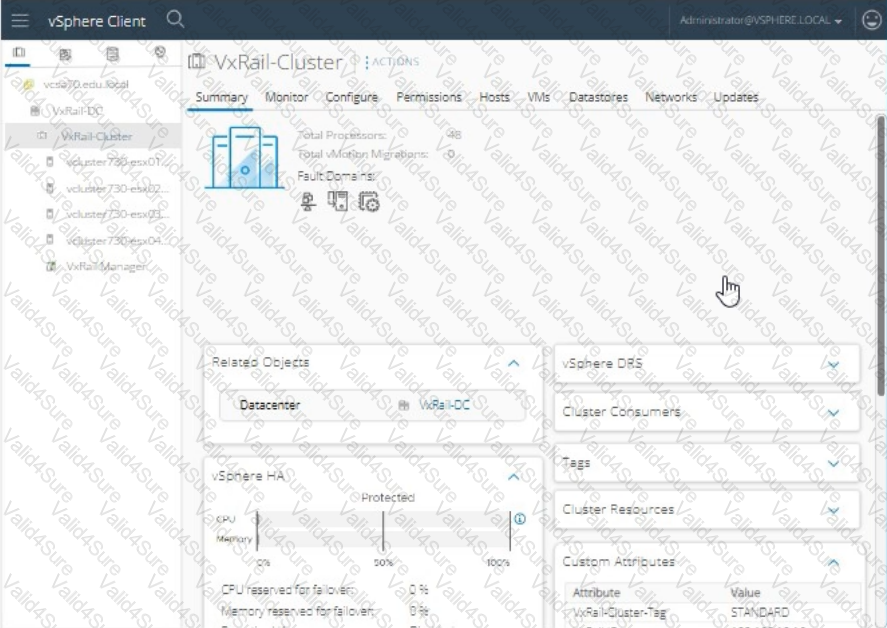D-VXR-OE-23 Exam Dumps - Dell VxRail Operate 2023
During a maintenance task on a VxRail Appliance, the system LED on vcluster730-esx03.edu.local is
required to be enabled so the node can be correctly identified in the physical rack.
Use the simulator to enable the System LED for the node.




Task
An administrator is working with the VxRail Dell Support team and as part of the troubleshooting, the admin has been instructed to temporarily remove the node with a serial number of "V0730040000000" from the cluster.
User credentials are Username of
"administrator@vsphere.local"
Password "VMw@r3!123".
Using the simulator, identify the correct node and remove it from the cluster.




After the initial setup, a customer requested the administrator use active-active teaming and failover order for the vSAN and vMotion port groups. The customer currently has two uplinks and one distributed switch. Without accessing any hosts, use the simulator to remediate the configuration.




An existing 4-node VxRail standard cluster has to be scaled out with 2 additional nodes and
configured as a stretched cluster. An administrator must prepare a vSAN storage policy that should
have the following:
- vSAN Policy Name: vSAN
Stretched Cluster
- Data protection across the sites
- Local protection: RAID-1 with
FTT=1
- Thick Provisioning
An administrator should be able to provision a VM even if the currently available cluster
resources cannot satisfy the current policy.
Use the simulator to create the required vSAN storage policy.




A VxRail administrator is planning a maintenance activity. The customer has a 2 hour maintenance window and wants to avoid unnecessary vSAN re-synchronization during this time.
Use the simulator to prepare the system for maintenance mode.




A VxRail administrator is concerned about security and wants to protect the vSAN storage against unauthorized access (for both data on disk and in flight.)
Use the simulator to enable the relevant services. A vSphere Native Key Provider has already been configured.



